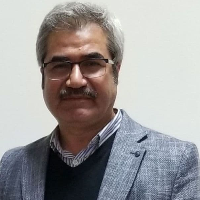Analysis of the Structural Behavior of Traditional Houses with an Emphasis on the Relative Wall Element; A Case Study of Kermanshah Berenji House
This research is an interdisciplinary approach to the coexistence of structure and architecture and has investigated the architectural spaces for seismic improvement of traditional buildings which were built during the first Pahlavi Period. Despite the importance of structure and its stability in traditional architecture and in houses that have cultural heritage value, due to the complex and unknown behavior of masonry buildings and the lack of sufficient information, the regulation 2800 has not provided a specific formulation for traditional buildings. But for their seismic improvement, the magazine 360 has been used. This research seeks to answer two questions: a) What are the most important factors affecting the stability of the Berenji building in Kermanshah based on the images and data analysis? b) In the field of architecture, what is the basis for the coexistence of structures and architecture during the first Pahlavi Period? To collect information, field observation and collection methods have been used. The detailed analysis and calculations of relative wall data have been carried out by quantitative method (causal-experimental research) and library technique, and the conclusion has been expressed by qualitative method. With this method, the stability of the structure of traditional buildings could be evaluated by means of relative walls that behave like windbreaks or shear walls. If the structure did not have enough resistance against lateral force or load, it was possible to increase the relative wall or provide other methods to strengthen the structure in relation to its stability; Therefore, it is necessary to research about the cohabitation between the structure and architecture due to the increase or placement of the relative walls. Thus, static principles have been complied in Iranian architecture during the first Pahlavi Period. Now, if similar buildings are evaluated in the mentioned period and this result is obtained, it could be said that the architectural principles were followed at that time with the approach of sufficient resistance of the building against earthquakes, which was obtained experimentally. In other words, the architects of that time were structural engineers by themselves.
- حق عضویت دریافتی صرف حمایت از نشریات عضو و نگهداری، تکمیل و توسعه مگیران میشود.
- پرداخت حق اشتراک و دانلود مقالات اجازه بازنشر آن در سایر رسانههای چاپی و دیجیتال را به کاربر نمیدهد.



